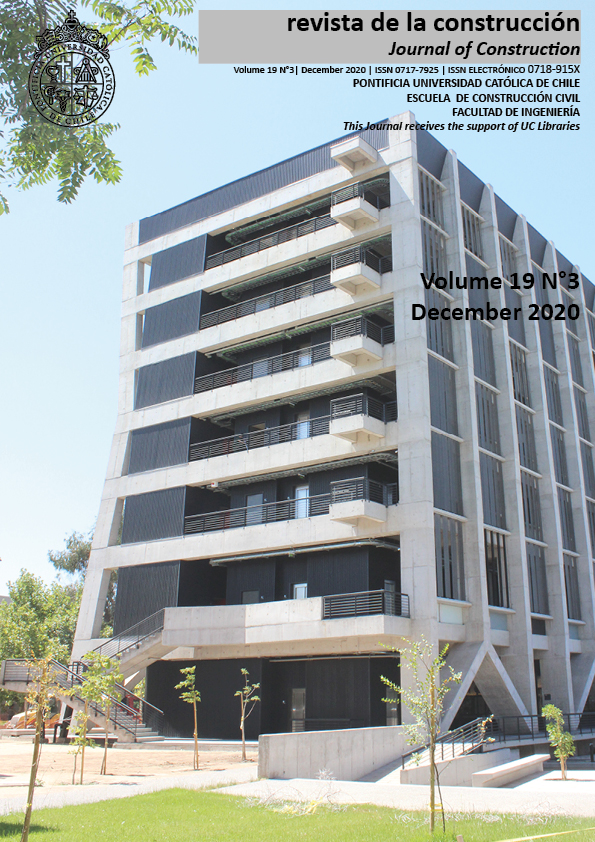Concrete wave barriers to mitigate ground vibrations induced by railway traffic: a three-dimensional numerical study
DOI:
https://doi.org/10.7764/rdlc.19.3.395-406Keywords:
railway vibrations, mitigation measures, discontinuous barriers, 3D dynamic numerical model, time/space domainAbstract
Continuous wave barriers are mitigation measures to reduce vibrations induced by railway traffic which have been well studied in technical literature. Nevertheless, there are not many studies about discontinuous concrete wave barriers. By this reason, in this paper continuous and discontinuous concrete wave barriers are studied and compared. With this objective, two theoretical cases with discontinuous barriers have been analysed and the results have been compared with those from both continuous barriers and without barriers cases. The study has been carried out with a dynamic numerical 3D FEM model formulated in the space/time domain, which has previously been validated by authors on the Lisbon-Oporto (Portugal) railway line. The numerical results show the discontinuous barriers with a small separation between axles (less than twice the thickness of the continuous barrier) are an efficient measure in the reduction of vibrations, reaching values of insertion loss of up to 13 dB. So, these could be a very interesting alternative to continuous barriers, in order to conjugate a somewhat lower level of reduction of vibration at a considerable lower cost.





